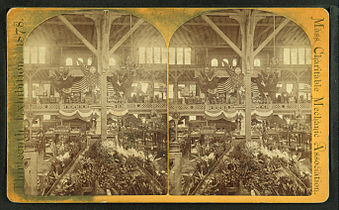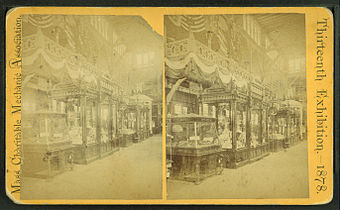Mechanics Hall may refer to different current or former meeting halls:

Huntington Avenue is a thoroughfare in the city of Boston, Massachusetts, beginning at Copley Square and continuing west through the Back Bay, Fenway, Longwood, and Mission Hill neighborhoods. It is signed as Massachusetts Route 9. A section of Huntington Avenue has been officially designated the Avenue of the Arts by the city of Boston.
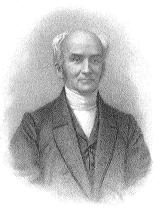
Timothy Gilbert was an American piano manufacturer, abolitionist and religious organizer in Boston, Massachusetts. His brother Lemuel Gilbert was also a piano manufacturer.
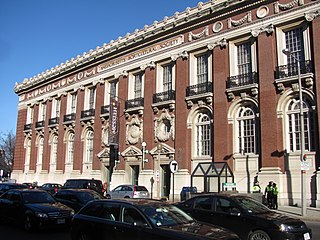
Symphony and Horticultural Halls are historic buildings at the corner of Massachusetts and Huntington Avenues in the Fenway–Kenmore neighborhood of Boston, Massachusetts. The halls were listed as a pair on the National Register of Historic Places in 1975. Symphony Hall was designated a National Historic Landmark in 1999.
Ephraim W. Bouvé was an engraver in Boston, Massachusetts, in the 19th century. Around 1848 he kept a studio on Washington Street. By 1863 he had moved his studio to Bromfield Street, and by 1883 moved again, to Milk Street. E.W. Bouvé served as a judge in the category for "paper, blank books, stationery, etc." in the 1887 exhibition of the Massachusetts Charitable Mechanic Association.
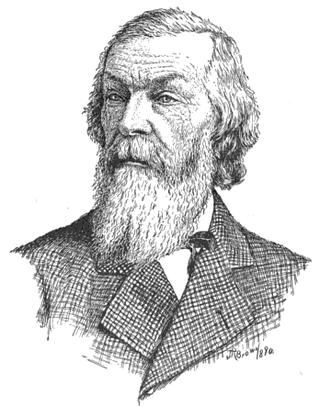
Benjamin Franklin Nutting was an artist in Boston, Massachusetts, in the 19th century. He taught drawing in local schools, published do-it-yourself drawing instruction materials, and showed his artwork in several exhibitions.
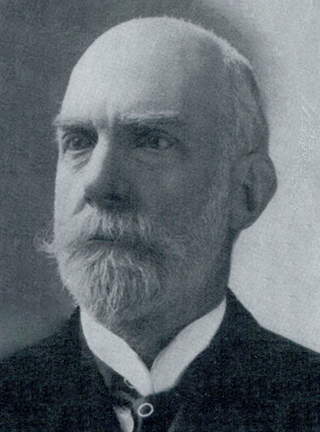
William Gibbons Preston was an American architect who practiced during the last third of the nineteenth century and in the first decade of the twentieth. Educated at Harvard University and the École des Beaux-Arts in Paris, he was active in Boston, New York, Rhode Island, Ohio, New Brunswick and Savannah, Georgia, where he was brought by George Johnson Baldwin to design the Chatham County courthouse. Preston stayed in Savannah for several years during which time designed the original Desoto Hotel, the Savannah Volunteer Guards Armory and 20 other distinguished public buildings and private homes. He began his professional career working for his father, the builder and architect Jonathan Preston (1801–1888), upon his return to the United States from the École in 1861, and was the sole practitioner in the office from the time his father retired c. 1875 until he took John Kahlmeyer as a partner in about 1885.
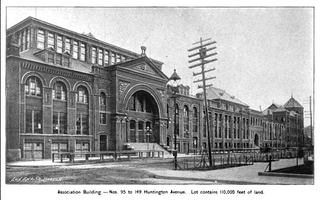
Mechanics Hall was a building and community institution on Huntington Avenue at West Newton Street, from 1881 to 1959. Commissioned by the Massachusetts Charitable Mechanic Association, it was built by the noted architect William Gibbons Preston. The building was located between the Boston and Albany railroad yards and Huntington avenue. It was razed for the Prudential Center urban renewal project of the early 1960s. The site is on the north side of Huntington Avenue, and since 1941 has been served by Prudential Station of the MBTA Green Line E branch.

Charles Hubbard (1801–1875) was an artist in Boston, Massachusetts in the 19th century. He kept a studio on Tremont Row and was affiliated with the Boston Artists' Association. He served as state senator from 1851-1852.
Antoine Sonrel was an illustrator, engraver, and photographer in Switzerland and Boston, Massachusetts, in the 19th century. He moved from Neuchâtel to the United States around the late 1840s, and was affiliated with Louis Agassiz throughout his career. As a photographer he created numerous carte de visite portraits in the 1860s and 1870s; subjects included his friend Agassiz, Oliver Wendell Holmes Sr., Oliver Wendell Holmes Jr., Abbott Lawrence Rotch, and sculptor Anne Whitney.

The New England Manufacturers' and Mechanics' Institute flourished in the 1880s in Boston, Massachusetts. It existed as a rival to the long-established Massachusetts Charitable Mechanic Association. Individuals affiliated with the NEM and M Institute included businessman John F. Wood, James L. Little, John M. Little, Samuel R. Payson, William B. Merrill, and Frederick W. Griffin.
Augustine H. Folsom or A.H. Folsom was a photographer in the Boston, Massachusetts-area in the late 19th and early 20th centuries. Subjects included buildings in Massachusetts, Maine, and Georgia. Folsom showed photographic work in the Massachusetts Charitable Mechanic Association exhibitions of 1874 and 1881. He lived in Roxbury, c. 1870–1926. Works by Folsom reside in the collections of the Boston Public Library; Historic New England; Metropolitan Museum, NY; Museum of Fine Arts, Boston; the Georgia State Archives; and the American Antiquarian Society.

Edwin Tryon Billings (1824-1893) was a portrait painter in 19th-century United States. He lived in Montgomery, Alabama; Worcester, Massachusetts; and in Boston. Among his numerous portrait subjects were Daniel Webster, William Lloyd Garrison and Oliver Wendell Holmes Sr.
The Mechanic Apprentices Library Association (1820-1892) of Boston, Massachusetts, functioned as "a club of young apprentices to mechanics and manufacturers ... whose object is moral, social, and literary improvement." Some historians describe it as "the first of the kind known to have been established in any country." Founded by William Wood in 1820, it also had an intermittent formal relationship with the larger, more established Massachusetts Charitable Mechanic Association. In its heyday, roughly 1820s-1850s, the Apprentices Library "[met] quarterly ; ... [had] nearly 200 members, and a library of about 2000 volumes; connected with which [was] a reading room, gratuitously supplied with the best newspapers and magazines of the city, and a cabinet of natural history. In addition to these advantages, the association [had] lectures and debates in the winter, and a social class for the study of elocution in the summer."

Henry Northey Hooper was a preeminent 19th-century American manufacturer and merchant of decorative lighting, Civil War artillery, and bells and chimes. He was a Boston politician and foundry owner and in his firm he cast the first life-size bronze statue in the United States.

Mechanics' Hall is a historic building and meeting space at 519 Congress Street in downtown Portland, Maine. It was listed on the National Register of Historic Places (NRHP) in 1973 and additional NRHP documentation asserting national significance of the building was approved in 2022. Built in 1857-59 by and for the members of the Maine Charitable Mechanic Association, it is a well-preserved example of Italianate architecture executed in brick and stone, and a landmark of Portland's downtown business and arts district. The building, still owned by MCMA, houses the association's library. The Maine Charitable Mechanic Association was founded in 1815 as a social organization that promoted and supported the skilled trades and their practitioners. Its original members were master craftspeople and entrepreneurs and their apprentices.
Amory Nelson Hardy or A.N. Hardy (1835–1911) was a photographer in Boston, Massachusetts, in the 19th century. Portrait subjects included US president Chester A. Arthur, clergyman Henry Ward Beecher, politician James G. Blaine, abolitionist William Lloyd Garrison, doctor Oliver Wendell Holmes Sr., jurist Oliver Wendell Holmes Jr., writer Julia Ward Howe, labor activist Florence Kelley, suffragist Mary Livermore, philanthropist Isabella Somerset, and suffragist Frances Willard. He also made "electric-light portraits" of roller skaters in 1883.
Thomas Waldron Sumner (1768–1849) was an architect and government representative in Boston, Massachusetts, in the early 19th century. He designed East India Marine Hall and the Independent Congregational Church in Salem; and the South Congregational Society church in Boston. He was also involved with the Exchange Coffee House, Boston.
Ernest Ferdinand Ritz was a Swedish-American photographer in Boston, Massachusetts during the 19th century.

The Maine Charitable Mechanic Association is a private non-profit organization located in Portland, Maine, United States. Founded in 1815, it has since 1859 been headquartered at Mechanics' Hall, 519 Congress Street, in the center of Portland. The library's hours are Tuesday through Thursday from 10:00 a.m. to 3:00 p.m., Friday from 4:00 p.m. to 7:00 p.m., and Saturday from 10:00 a.m. to 1:00 p.m.
















